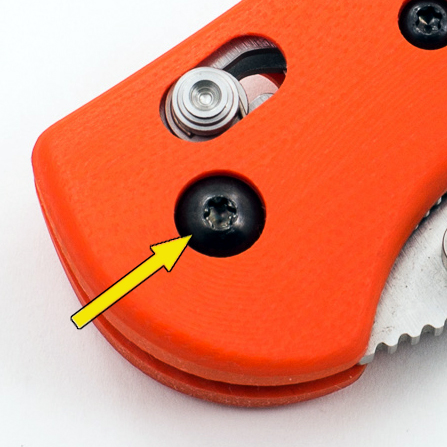3 Tips for Breaking-In a New Folding Knife
12th Oct 2015
3 Tips for Breaking-In a New Folding Knife
The pivot on your brand-new knife, whether it's a modern folder or a traditional slipjoint pocketknife, may feel gritty or stiff. That's not uncommon, and it's nothing to worry about -- usually it's a sign that the knife simply needs some break-in time.
How long that takes varies from knife to knife. Here are three tricks to get you (and your knife) through the break-in period.
1. Just use it. As a mechanical device, a folding knife's contact surfaces take time to "mate" -- the regular action of opening and closing a blade will "polish" those surfaces. It doesn't take long, generally speaking, and you can expedite the process by repeatedly opening and closing the blade (or blades).
On the other hand, use your knife and it'll happen naturally.
2. Hold the lube. When the 'maker assembled your folding knife, the pivots were lubricated with graphite powder, oil or light grease -- probably only a tiny amount, to avoid interfering with the break-in process.
When you detect a stiff or sticky pivot on a new knife, you might be tempted to lube it right away -- don't do that. It might smooth the action of the joint, but it'll postpone (or even prevent) natural break-in.
3. Be patient. We know that this can be the hardest part of living with a new folding knife, but you need to give the pivot surfaces time to mate naturally. Trust us, you'll eventually reach a point when your knife becomes noticeably smoother -- we can't say when, exactly, but you'll definitely feel it.
That's when you can add a drop or two of light oil. (We recommend Benchmade BlueLube.)
Bonus break-in tip: Don't adjust the pivot.

If your new knife is a modern folder, chances are it has an adjustable pivot. This feature allows you to tighten or loosen the pivot screw (usually using a Torx driver) to adjust the action of the knife to your liking.
During break-in, however, you may want to avoid making any adjustments. You don't want to loosen the pivot screw to "fix" a problem that isn't a problem, in the process delaying normal break-in.
Like waiting a while before applying lubricant, we suggest giving your new knife time to break-in naturally before messing with the tension of the pivot.
(Once you're past the break-in period, feel free to check out our how-to on "Adjusting the pivot on a folding knife.")

